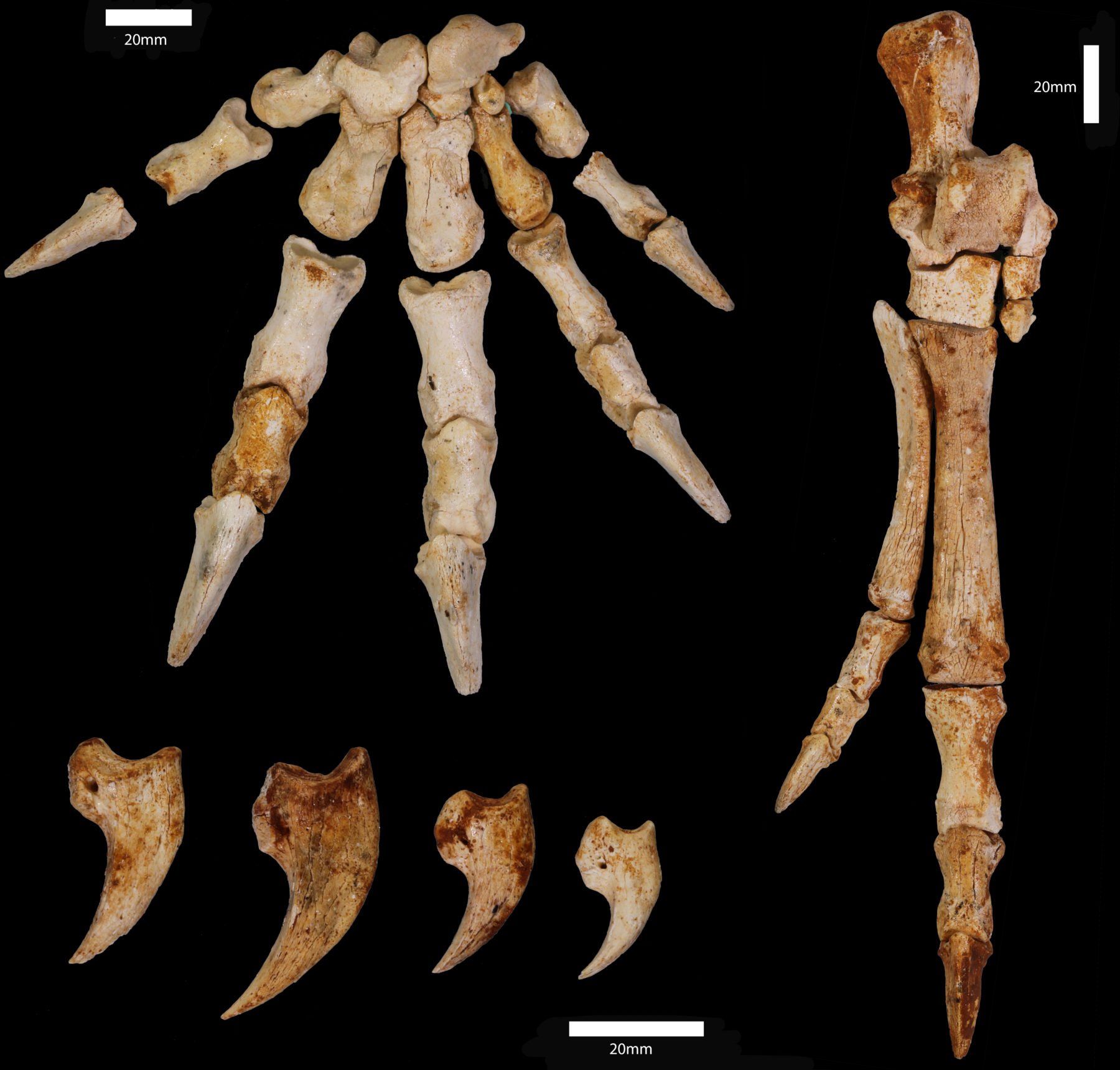Ancient species of tree kangaroo discovered

Scientists have discovered a new species of ancient kangaroo from deposits in the Nullarbor Plain Thylacoleo Caves and Mammoth Cave of Western Australia.
The findings not only expand our understanding of the diversity of kangaroo species, but also provides evidence that tree-climbing evolved more than once in the kangaroo family tree.
Analysis of the fossils found the kangaroo had adapted to climb through powerful adduction of the forelimbs and hindlimbs, a strong grasp and curved claws.
“The specimens we analysed, including several cranial and two near-complete skeletons, suggests this kangaroo species would climb and ‘move slowly’ through trees,” says lead researcher Dr Natalie Warburton of Murdoch University.
“By undertaking a painstaking process of identifying and describing the anatomical details of every single bone that was recovered from the skeletons, we have been able to reveal that this species of extinct wallaby was adapted for climbing trees in order to browse on plant material not available to animals that are stuck on the ground.
“This provides a completely new interpretation of the biology of the species.”
The remains were first discovered in 2002 and 2003 by Western Australian cavers Paul Devine and Eve Taylor.

“Despite purportedly being an expert in fossil kangaroos, it took me most of that time to work out that these two skeletons belonged to a species first described decades earlier from jaw fragments from a cave in south-western Australia,” says Professor Gavin Prideaux, co-director of the Flinders University Palaeontology Laboratory in Adelaide.
“The Thylacoleo Caves are famous for both the remarkably complete preservation of the fossil remains and the insights they provide into the unexpectedly high level of diversity of large marsupial species that inhabited what is now an arid treeless plain.
“This discovery provides yet another reminder of just how little we understand of even the relatively recent geological past in Australia.”
The findings also tell us about the environment in which the kangaroos once thrived.
“These fossils have unusually long fingers and toes with long, curved claws, in comparison to other kangaroos and wallabies, for gripping; powerful arm muscles to raise and hold themselves up in trees, and a longer, more mobile neck than other kangaroos that would be useful for reaching out the head in different directions for browsing on leaves,” says Natalie.
“This is really interesting, not just from the point of view of unexpected tree-climbing behaviour in a large wallaby, but also as these specimens come from an area that is now bare of trees, and so tells us that the habitat and environment in the area were really different to what they are now, and perhaps different to what we might have previously interpreted for that time.
“This is unexpected and exciting and it provides us with new information as we try to understand the changing environments of Australia through time.”





